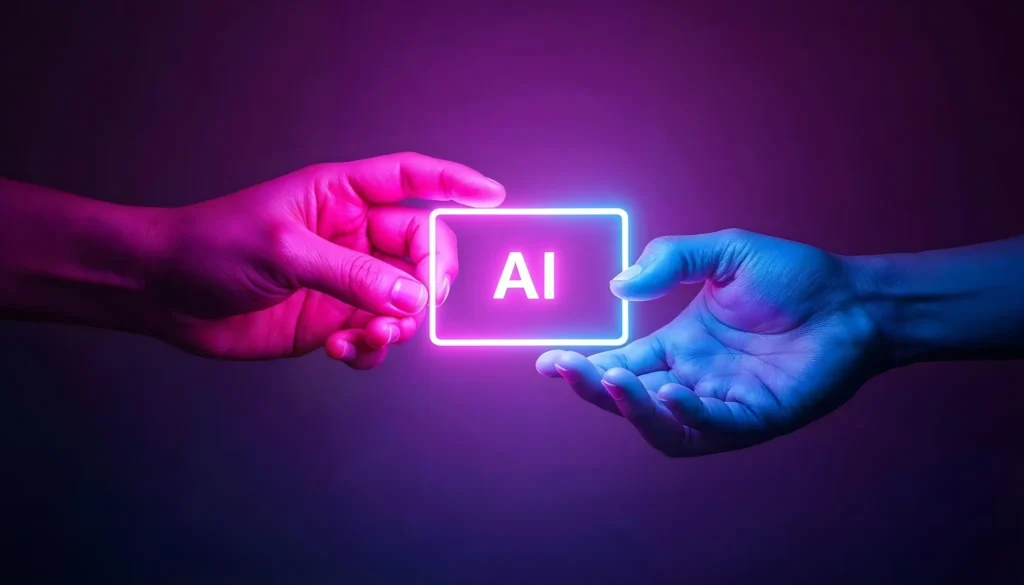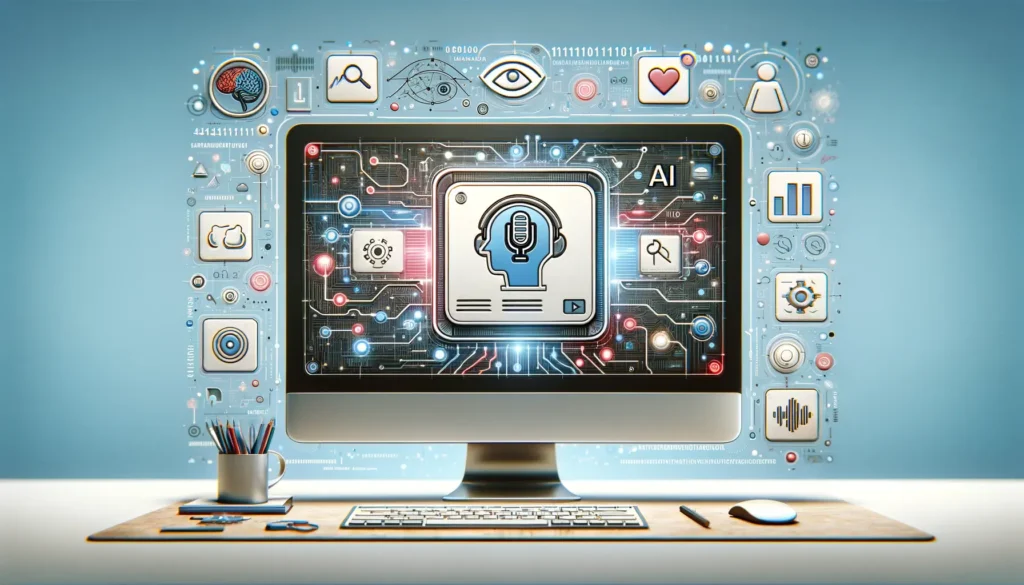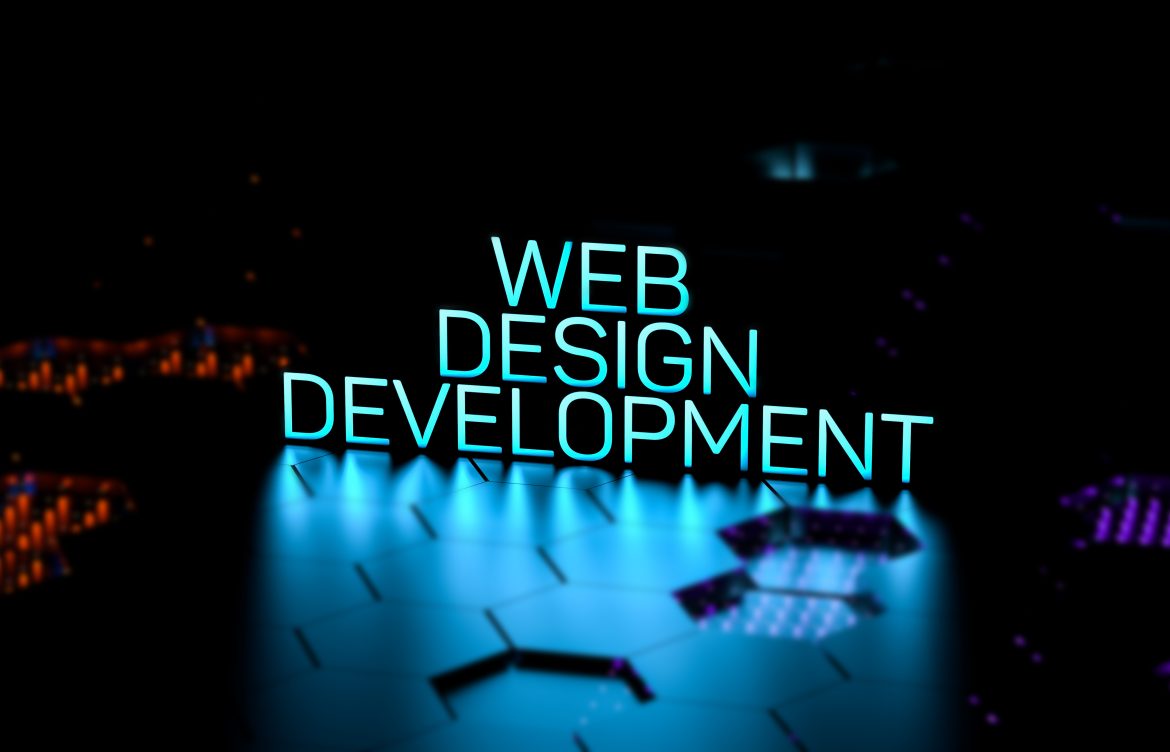The rapid advances that are being made in the field of artificial Intelligence (AI) have transformed the world of business as well as the web development and design is the same. AI is not a distant notion but is a fundamental element of our interactions with technology in the present. As developers and businesses are striving to build faster and more efficient websites, as well as user-centric websites AI has revolutionized both technical and creative aspects of the internet.
This article explains the ways in which AI is changing the future of web design and development, offering new possibilities for creativity as well as user experiences (UX). With AI driven design software to smart user interfaces The new web is expected to be more creative and user-friendly than ever before.
1. AI-Powered Design Tools: Expanding Creative Boundaries
Design and creativity have always been dominated by humans. But, AI is now expanding the possibilities of the human imagination with machines learning techniques. Tools for design powered by AI like Adobe Sensei and Figma’s AI features, have simplified designing processes and giving designers the opportunity to explore more creative approaches.
Automating repetitive tasks: AI can handle repetitive and lengthy design tasks such as redesigning photos, recommending layouts or even deciding on colors. This lets designers make more innovative decisions and maintain consistency across an entire project. Tools such as Fronty that can transform a sketch or an image to HTML code, help speed up the process of design to development.
Generative Design AI is able to generate several designs based on certain information, like guidelines for brands or preferences of users. This means that designers are able to experiment with various concepts quickly and effectively. It is possible to create generative AI design tools can provide real-time feedback, which allows designers to refine their designs in a faster rate. This results in not just more creative freedom, but also enhanced design outcomes that are more in tune with the needs of users and business objectives.
AI as Design Partner: Rather rather than replacing designers with human ones, AI has evolved to be a partner in collaboration. AI design systems can offer designs for improvement, improve layouts to increase user interaction and study previous projects to help design future projects. The combination of human insight and AI precision improves the design process overall to ensure a balance of design and function.
AI-powered User Experiences that are personalized for each user using AI

Personalization is the key element of modern web design and AI is pushing it to new levels. AI algorithms analyse user data to provide more personalized and personalised web experiences. This approach is based on data and improves satisfaction and engagement of users by providing relevant products, content, and services.
AI-Driven Personalization AI can analyse the user’s behavior, preferences, and other interactions to provide customized content in real-time. For instance, an online-commerce site can recommend items based on the browsing previous browsing history and a news website can suggest articles in response to a user’s preferences for reading. These personal experiences boost the user’s experience and motivate them to stay longer on a website.
Chatbots, as well as AI Assistants AI-powered chatbots as well as virtual assistants are becoming more popular on web pages. These sophisticated tools are able to provide immediate assistance, respond to user queries and assist users in complex procedures. AI chatbots can also benefit through user interactions, and grow more efficient with time giving the help or information the users require. With improved responsiveness and 24/7 customer support, AI-powered chatbots can enhance the user experience overall.
Predictive UX AI will also be able to determine the actions that users will perform based on their previous patterns, which allows websites to anticipate the needs of users and provide solutions quickly. Predictive UX can improve eCommerce platforms by suggesting items before the users realize they’re in need of them, or automatically filling out forms based upon previous inputs. The seamless and intuitive experience is less abrasive, making websites more efficient and user-friendly.
AI and Automation in Web Development
Apart from altering style, AI is also revolutionizing web development through automation of coding tasks by streamlining workflows and making web development easier to access.
AI-Generated code: AI-powered tools such as GitHub Copilot as well as DeepCode are capable of creating and providing code snippets in response to natural language prompts, or user input. These tools help developers in speeding up the code process, decreasing errors and enhancing the overall quality of code. AI-powered development platforms can manage everything from writing basic functions to tackling complex programming problems, allowing developers to concentrate on more complex tasks.
Automated Debugging and Testing: AI can also simplify the testing and debugging process by detecting errors automatically and suggesting ways to fix them. This results in secure and reliable websites with less problems with performance and bugs. By constantly monitoring the code, AI can detect potential issues or performance bottlenecks and ensure that the site is always fast, secure and reliable.
Low-Code and No-Code Platforms AI is helping to create the rise of low-code and no-code platforms that empower users with no technical skills to create websites and apps. These platforms that are powered by AI utilize visual interfaces as well as drag-and-drop elements to let users create websites without having to write any code. This decentralization of web development offers possibilities for both businesses as well as individuals who can develop custom websites quicker and for less money.
AI in Web Accessibility

Accessibility is an important aspect of web design. It ensures that websites are accessible for everyone, even those handicapped. AI is playing an important part in making the internet more accessible through the use of tools that automatically improve accessibility.
AI-powered accessibility tools: AI can automatically adjust elements of websites to help them be more accessible. In particular, AI tools can analyze the contrast ratios on a website’s color schemes to make sure that they comply with accessibility standards. AI can also create alternatives to text on images which makes them accessible for visually impaired users who depend upon screen reader software.
Real-time accessibility audits: AI is able to continuously monitor websites to make sure it complies with accessibility guidelines, such as those of the Web Content Accessibility Guidelines (WCAG). If a website does not meet the requirements in compliance AI will prompt the developer to make changes or, in certain cases it will automatically implement fixes. In making accessibility easier to create and manage, AI can help build a more inclusive website.
AI Voice Interfaces for accessibility Vocal user interfaces (VUIs) that are powered by AI can also improve accessibility on the internet. People with visual impairments or mobility issues are able to navigate websites with voice commands instead of traditional input methods such as a keyboard or mouse. The web is now accessible to a wider range of users and allows everyone to use websites with ease.
AI for Data-Driven Design and UX Optimization
Data is the core of web development. AI excels in processing and analyzing huge quantities of data to provide useful insight. Through the use of AI designers and developers can take data-driven decisions to improve UX and enhance the performance of websites.
A/B Testing using AI A/B Testing: Traditional testing, where various versions of a web page are tested to determine which is more effective is time-consuming. AI automates this process by constantly monitoring user interaction and evaluating changes in real-time. AI-powered A/B testing is able to quickly determine the design elements, call-to action buttons or layouts for content result in the highest conversions, resulting in faster optimizations.
Analyzing Heatmaps AI instruments can analyse the behavior of users through heatmaps, which show where users are scrolling, clicking or spending the most time. These data provide valuable insight into what areas of a website are drawing attention, and which areas are neglected. AI-driven heatmap analysis allows designers to modify their layouts in order to be more aligned with the user’s behavior.
AI for Content Optimization AI can also be used to optimize content on websites to increase SEO and better user engagement. AI can study user behavior, search patterns as well as data from competitors to suggest content more likely to be ranked higher by search engines and be a hit with people. This method of content creation makes sure that websites are relevant and appealing with their audience.
Conclusion
What’s next for web design and development is closely linked to the rise of AI. From streamlining the process of designing to increasing accessibility and personalization, AI is revolutionizing how websites are developed and used. As AI continues to develop it will expand the limits of creativity and user experience, providing unprecedented possibilities for innovation.
For developers and businesses adopting AI-powered tools and strategies is crucial to remain competitive in a rapidly evolving digital landscape. AI isn’t simply a technological advance It’s a revolutionary revolution that has opened up new possibilities for web development and design, eventually changing the way we interact with the internet.

